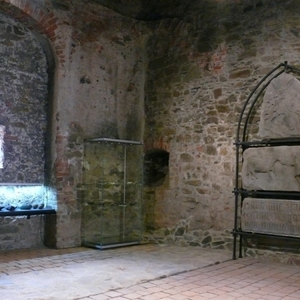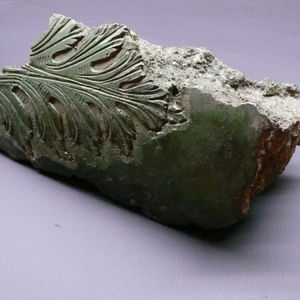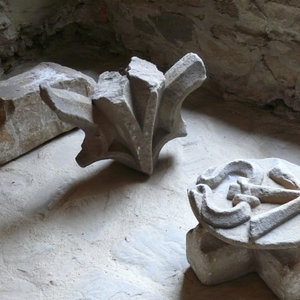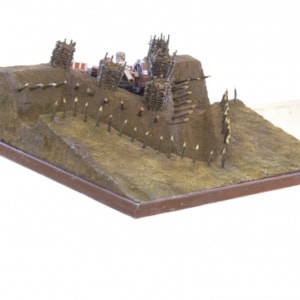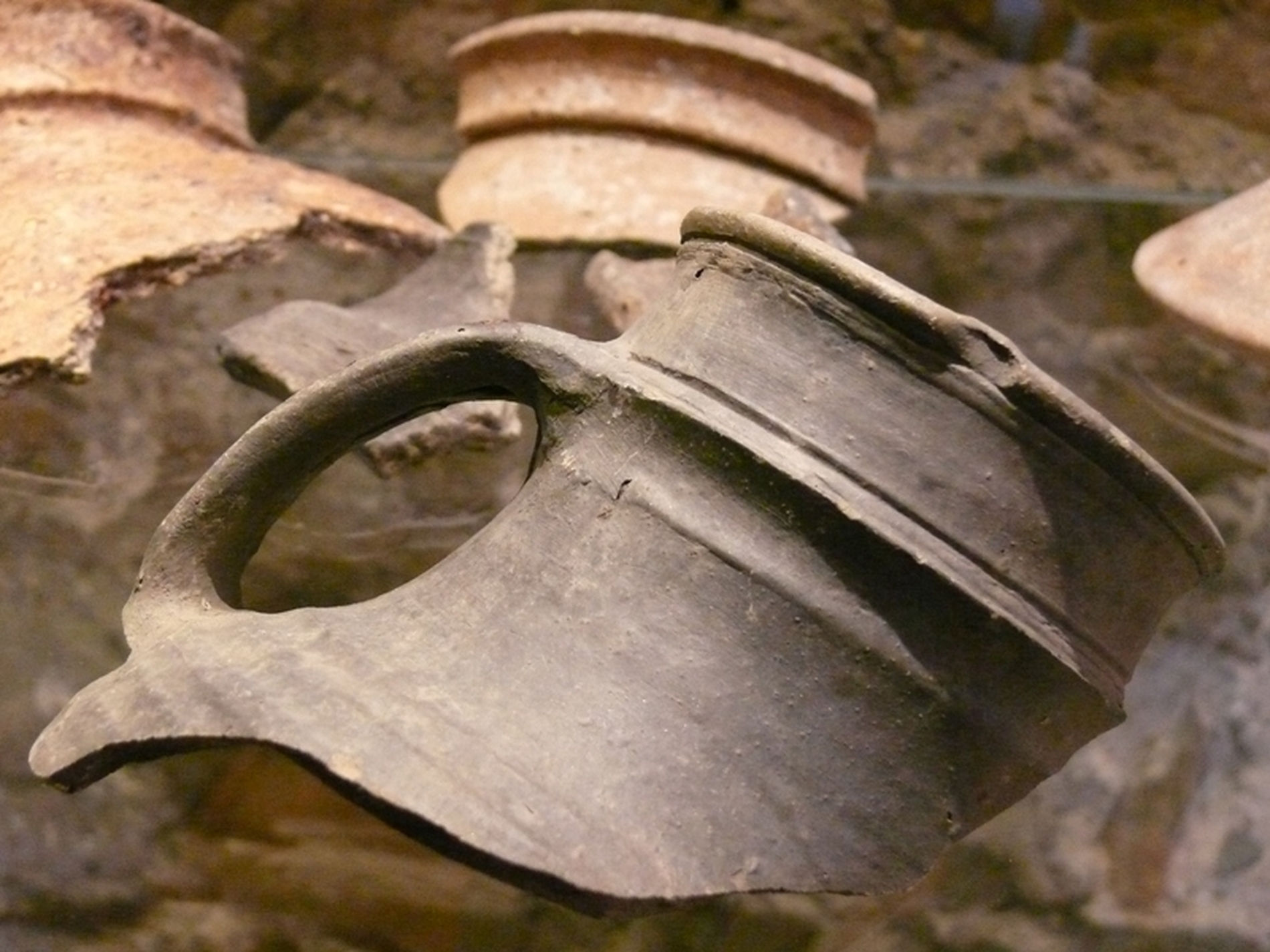
Archaeology Exhibition
The exhibition “Archaeology at Helfštýn Castle” reveals the hitherto hidden secrets of the ancient history of one of the largest fortress complexes in Europe.
The archaeological exhibition is installed within the Poděbrady Bastion from the second half of the 15th century. In the late 15th century, under the rule of William of Pernštejn, the bastion was rebuilt into a smoke kitchen, connected with the eastern wing of the palace by a diaphragm arch. During the Renaissance conversion by John IV of Pernštejn, the kitchen was expanded and moved in front of the outworks, the course of which is in the floor presented as part of the exhibition. The last significant alterations were made under the House of Bruntál & Vrbno in the 17th century, when a residential level with servants’ quarters was built atop the facility.
The exhibit features the remnants of the smoke kitchen – a sink and a carvery tub. Furnaces have been preserved under the floor; their shape and function is explained in information panels. Fragments of architectural elements from various construction stages were preserved during the reconstruction. Visitors will gain an impression of the original dimensions of the room when looking at the outworks. The vault structure that supported the central chimney is documented by squinches in the corners of the room.
The large serving window is an element that confirms the original function of the facility. The exhibit informs visitors about the history of Helfštýn Castle, research performed in the Poděbrady Bastion, as well as artefacts found at the castle and in its vicinity. Finds from the 13th to 17th centuries are presented. The installations are divided primarily by the materials of the exhibits. Gothic, Renaissance, and Baroque ceramics are represented; the selection of Baroque stove tiles includes, for instance, a unique set of fragments of tiles made by Wolf Dietrich Světlík of Gzes from 1663. Metallic objects, so typical of Helfštýn, are represented by items of everyday use found within the premises of the castle. A separate part of the exhibition shows part of the equipment of a horse and rider.
The appearance of the castle (including the outer fortifications) during the Thirty Years’ War is given by a model and a drawing of the bastion, both made by Dalibor Figeľ. Cannon balls and fragments of ruptured cannon barrels commemorate the tumult of the Thirty Years’ War. The recess of the serving window features chipped stone elements from the era of the House of Kravaře and House of Pernštejn. The north-western wall is dominated by three original blocks of the relief plate of the House of Pernštejn from 1480.
